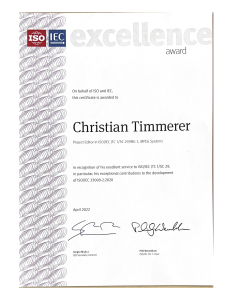Data Compression Conference (DCC)
19-22 March 2024, Snowbird, Utah, USA
[PDF]
Hadi Amirpour (AAU, Austria), Jingwen Zhu (University of Nantes, France), Raimund Schatz (AIT, Austria), Patrick Le Callet (University of Nantes, France), and Christian Timmerer (AAU, Austria)
Abstract: The evolving landscape of the delivery of multimedia content requires a deep understanding of how the design of the bitrate ladder (for HTTP adaptive streaming) influences cost and quality. This paper explores the use of Just Noticeable Differences (JND) to select bitrate-resolution pairs for constructing a bitrate ladder with respect to the proportion of satisfied user ratio (SUR). To expand the investigation to various codecs, first, a method is explained that transfers the JND points obtained through subjective testing from one codec (e.g., AVC) to other codecs (e.g., HEVC, VVC). This approach helps avoid the additional costs associated with conducting subjective tests to obtain JND points for a wide range of different codecs. To achieve this objective, we investigate the codec-agnostic nature of various video quality metrics, followed by the transfer of JND between two codecs, taking into account the most suitable codec-agnostic video quality metric. Secondly, we delve into the analysis of the bitrate cost of a given bitrate ladder from a JND perspective, i.e., as a function of the SUR. Among others, our experimental results demonstrate that to increase the SUR from 75% to 90%, it is necessary to double the video bitrate.






 On behalf of ISO and IEC, this certificate is awarded to
On behalf of ISO and IEC, this certificate is awarded to





